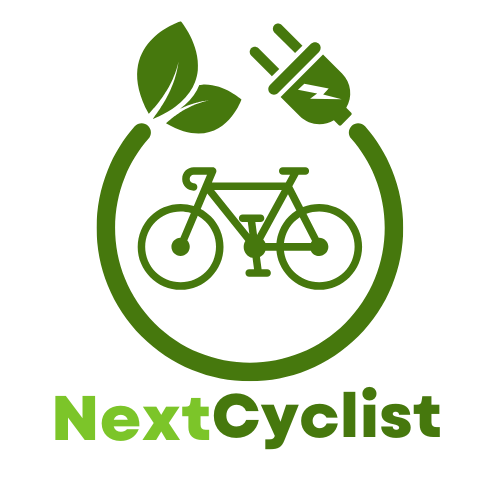Should Bike Tires Be at Max PSI for Safety?
When it comes to e-bikes, tire pressure often gets overlooked, but it’s absolutely crucial for keeping you safe on the road. Many riders ask themselves: should bike tires be at max PSI? This question isn’t just about finding the right pressure; it directly impacts your ride's comfort, handling, and safety.
Here’s the reality: running your tires at very high pressure can cause them to lose grip and increase the chance of a blowout, while too low pressure might leave you struggling to keep control. So, what’s the sweet spot? Don’t worry—we’ll cover the essentials to help you make the right call.
In this article, you’ll learn what PSI really means for your e-bike, the consequences of over-inflation, and how to find the ideal pressure for your tires. By the end, you'll have the knowledge you need to enhance your riding experience while staying safe. Ready to roll? Let’s get started!
TL;DR
- Tire pressure (PSI) is crucial for safety, comfort, and handling on e-bikes.
- Under-inflation risks blowouts and poor control; over-inflation leads to a harsh ride and increased puncture risk.
- Check your tire pressure regularly, ideally before each ride.
- Aim for the middle of the recommended PSI range displayed on your tire sidewall for optimal performance.
- Adjust PSI based on weight, cargo, and terrain: higher for smooth paths, lower for off-road.
- Use a reliable pressure gauge for accurate readings and adjustments.
- Regular tire inspections and rotations can extend tire life and enhance safety.
Understanding PSI and Its Importance
PSI, or pounds per square inch, is a critical measurement of tire pressure for your ebike. Proper PSI is essential for ensuring your tires maintain optimal contact with the ground, which directly impacts your control and overall riding experience. Keeping your tires inflated to the correct pressure not only enhances performance but also ensures your safety on the road.
When your tires aren't at the right PSI, you might face several issues, like:
- Blowouts: Under-inflated tires can overheat, leading to sudden blowouts, especially during long rides.
- Reduced Handling: Tires inflated too low or too high can cause skidding, making it tougher to control your ebike.
- Inefficient Performance: Tires at incorrect PSI tend to wear out faster and decrease battery efficiency.
To get the most from your ebike, here are a few actionable tips to ensure your tires are always at the right pressure:
- Check Frequently: Make it a habit to check your tire pressure before every ride. A simple tire pressure gauge can help. Most bikes will have a recommended PSI range labeled on the tire itself.
- Inflate Properly: When inflating your tires, aim for the middle of the recommended PSI range. This will give you the best balance of comfort and performance.
- Know When to Adjust: Temperature changes can affect tire pressure. As a rule of thumb, for every 10-degree change in temperature, your tire pressure may change by about 1 PSI. Keep this in mind, especially when riding in different seasons.
Maintaining the right PSI can significantly enhance your riding experience. If you’re looking for more detailed maintenance guidance, consider checking out more about basic e-bike maintenance here.
Following these simple steps will help you enjoy a smoother, safer ride on your ebike. Remember, keeping your tires in check is your first line of defense against mishaps on the road!
What Happens When Tires Are Overinflated?
Keeping your e-bike tires at the right pressure is crucial for performance and safety. Overinflated tires can lead to more issues than you'd think, adversely affecting your ride quality and overall biking experience. Here’s what happens when you go overboard with the PSI.
Overinflated tires can cause a harsh ride and reduced grip.
When your e-bike tires are overinflated, they become rigid. This hardness translates to a less comfortable ride, as you’ll feel every bump in the road. Additionally, the lack of grip means that your bike may slide or skid more easily on wet or uneven surfaces. To avoid this, always check your manufacturer's recommended PSI and adjust accordingly for a smoother, safer ride.
They are more prone to punctures and blowouts on rough terrain.
Another downside to overinflated tires is their vulnerability to punctures and blowouts. When the tire pressure is too high, the tires may not absorb shocks effectively, making them more likely to pop when encountering potholes or sharp debris on the road. To keep your e-bike rolling smoothly, regularly inspect your tires for wear and ensure they're inflated to the correct pressure.
Excessive pressure may lead to uneven tire wear and shorter life.
Overinflation doesn't just affect safety; it also changes how tires wear down. Tires that are too inflated tend to wear unevenly, especially in the center. This can drastically shorten their lifespan, making it crucial to monitor tire pressure regularly. A good habit is to check your tire pressure at least once a month and adjust it as needed.
By keeping these points in mind, you can maintain a bouncy, safe ride on your e-bike while extending the life of your tires. Remember, comfort and safety start with the proper pressure!
Finding the Right PSI for Your Ebike
Setting the correct tire pressure (PSI) for your ebike is crucial for both safety and performance. While many riders wonder if they should always have their tires inflated to the maximum PSI, it’s not a one-size-fits-all situation. Here’s how to find that sweet spot for your ride.
First, check the manufacturer's recommendations. Most tires will display the recommended PSI range right on the sidewall. This number is your baseline and should guide your adjustments. Ignoring this can lead to poor handling and increased wear on your tires.
Next, consider personal factors like your weight, the cargo you might be carrying, and your riding conditions. For example, if you're heavier or plan to load additional gear, you might want to pump your tires closer to the higher end of the recommended PSI range. Conversely, if you're riding solo and light, you can usually go lower to enhance comfort.
Lastly, the terrain plays a significant role in your PSI settings. Here are some tips:
- Smooth paths: Aim for higher PSI (closer to max) to lower rolling resistance, which means a faster and more efficient ride.
- Off-road trails: Lower the PSI to improve traction and provide a cushioned feel over bumps. This will help keep your tires in contact with uneven surfaces.
By keeping these factors in mind, you can adjust your PSI for a safer and more enjoyable ride. Remember, finding the right pressure isn’t just about following numbers—it's about optimizing your experience based on your unique riding conditions.
| Terrain Type | Recommended PSI Range | Benefits |
|---|---|---|
| Smooth paths | Near max (e.g., 40 – 50 PSI) | Lower rolling resistance, faster |
| Off-road or bumpy | Lower (e.g., 20 – 30 PSI) | Better traction, comfort |
By adjusting your tire pressure accordingly, you’ll be ready for any adventure on your electric bike!
How to Measure and Adjust Your Tire Pressure
Maintaining the correct tire pressure is crucial for the safety and efficiency of your ebike. Over or under-inflated tires can affect handling and battery life. Follow these steps to measure and adjust your tire pressure properly.
Use a reliable pressure gauge to check current PSI.
Before making any adjustments, it's essential to check your current tire pressure with a reliable pressure gauge. Whether you opt for a digital or a manual gauge, accuracy is key. Here’s how to do it:
- Remove the valve cap from the tire you want to check.
- Firmly press the gauge onto the valve and take a reading.
- Look for the PSI marking—this gives you a good idea of whether you need to add air.
If your tire PSI is significantly lower than recommended, it’s time to pump it up.
Inflate tires using a pump with a built-in gauge for accuracy.
To safely and correctly inflate your ebike's tires, use a pump that features a built-in gauge:
- Attach the pump nozzle to the tire valve and make sure it’s secure.
- Start pumping, and keep an eye on the gauge.
- Inflate until you reach the recommended PSI listed on the side of your tire.
This ensures you don’t overinflate and compromise the tire's integrity.
Regularly check your tire pressure, especially before long rides.
Consistency is key for tire maintenance. Make it a habit to check your tire pressure regularly—ideally before every long ride:
- Set a weekly reminder to check your tire pressure, especially if you ride frequently.
- Use a checklist to ensure all tires are within the recommended range.
Quick Reference Table for Recommended PSI
| Tire Type | Recommended PSI Range |
|---|---|
| Electric Bike | 35-50 PSI |
| Mountain Bike | 30-40 PSI |
| Road Bike | 80-130 PSI |
Having the right tire pressure not only improves your ebike performance but also enhances your overall riding experience. So grab that pressure gauge and get to it!
Tips for Maintaining Tire Health
Keeping your e-bike tires in top shape is crucial for safety and performance. Proper maintenance can extend the life of your tires and ensure a smoother ride. Here are some practical tips to help you maintain your e-bike tire health.
-
Inspect tires regularly: Check for cracks, punctures, and wear before each ride. If you notice any damage, it’s best to replace the tire to avoid any mishaps on the road. Look closely at the tread; smooth or uneven areas could indicate that it’s time for a replacement.
-
Rotate tires periodically: Just like your car, rotating your e-bike tires can help promote even wear. Most cyclists should aim to rotate their tires every 500-1,000 miles, depending on riding habits. Keep an eye on the front and rear tires—if one shows more wear than the other, swap their positions to balance it out.
-
Store your e-bike wisely: Where you keep your e-bike matters, too. Storing it in a cool, dry place helps avoid temperature-induced pressure changes. Extreme temperatures can cause your tires to expand or contract, leading to loss of air pressure or cracks. A temperature-controlled garage is ideal, but if that’s not an option, just keep it out of direct sunlight and away from heat sources.
By taking these steps, you can make sure your e-bike tires remain in top condition, enhancing both safety and performance while also saving you money on replacements. It's all about being proactive!
| Maintenance Tip | Recommended Frequency |
|---|---|
| Tire inspection | Before each ride |
| Tire rotation | Every 500-1,000 miles |
| Ideal storage conditions | Year-round |
Keep these maintenance tips in mind to protect your investment and enjoy your rides!
Well, let’s wrap this up! Understanding whether bike tires should be at max PSI for safety is vital for a smooth and safe ride on your e-bike. We've learned that keeping your tires within the right pressure range not only enhances control and comfort but also minimizes the chances of blowouts and uneven tire wear. Remember, it's all about finding that sweet spot for your riding conditions.
So, why not make tire checks part of your routine? Grab that pressure gauge and give your tires a quick check before every ride. If you want to dive deeper into maintenance tips, download our free e-book on e-bike upkeep. Or, if you have questions, don’t hesitate to reach out to us. Taking care of your e-bike is just a few simple steps away, and your future rides will thank you for it!

